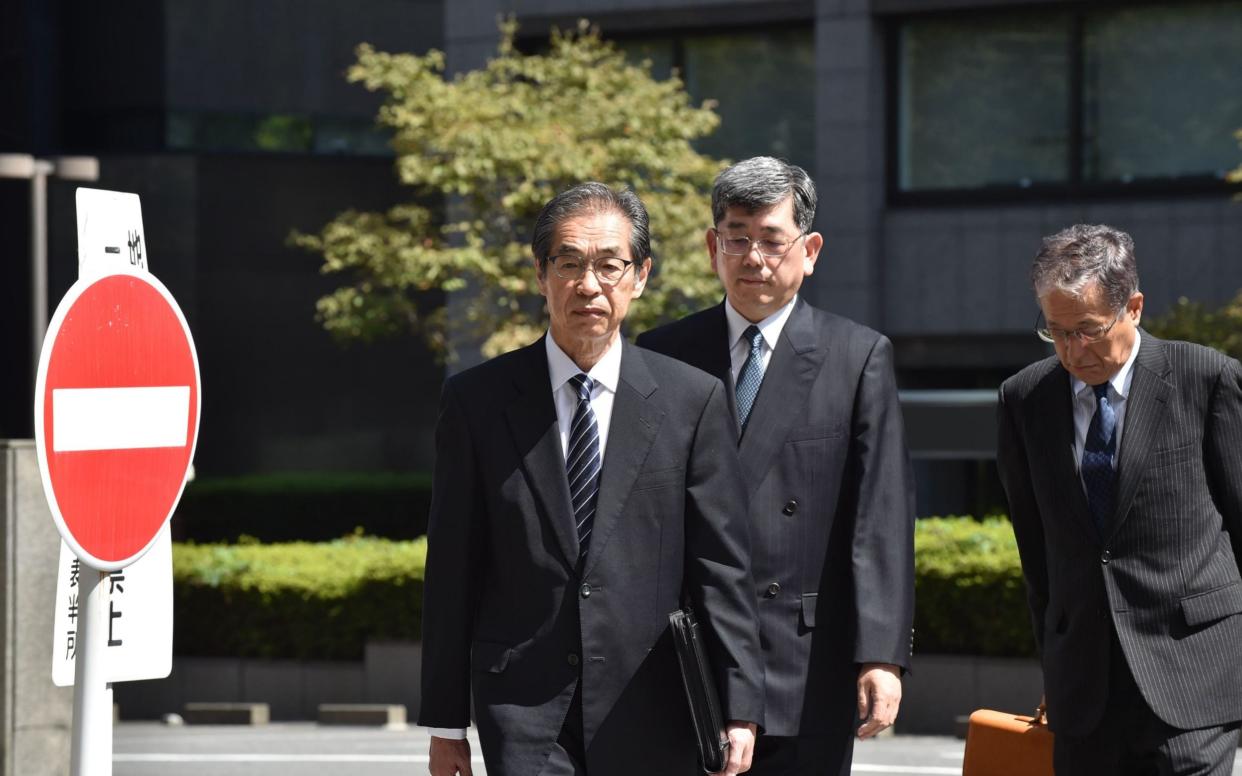Three executives acquitted of negligence over Fukushima nuclear disaster

Three former executives of the company that operated the Fukushima nuclear plant were acquitted by a court in Tokyo on Thursday of professional negligence resulting in death and injury.
Tsunehisa Katsumata, a former chairman of Tokyo Electric Power Co., was found not guilty of charges arising from the meltdown of three reactors at the company’s plant in March 2011, along with Ichiro Takekuro and Sakae Muto, both former vice presidents of the utility.
All three men had initially been charged in 2016 with failing to heed reports that the Fukushima Dai-Ichi plant could sustain serious damage in the event of a major earthquake off north-east Japan that caused a tsunami.
Prosecutors were seeking prison terms of five years, with all three men pleading not guilty.
According to court papers, simulations indicated that tsunami measuring more than 50 feet tall were possible in the event of an off-shore tremor, with prosecutors claiming that despite the warnings, the three executives chose not to improve sea defences at the plant.
A magnitude 9 earthquake struck off the coast on March 11, 2011, generating a tsunami estimated at 46 feet high. The waves swamped the plant, destroyed the reactor cooling equipment and back-up generators and caused the melt-down of three of the six reactors at the plant.
The accident was the second-worst nuclear disaster in history, behind only Chernobyl, and more than 470,000 people were evacuated from areas most severely affected by radiation that leaked from the plant.
Forty people died while being evacuated from hospitals in the path of the radiation cloud and a further 14 people were injured in a series of hydrogen explosions at the plant. Around 18,500 people died or are still listed as missing as a result of the disaster, the majority were victims of the tsunami.
Handing down his ruling at the Tokyo District Court, Kenichi Nagafuchi, the judge, said, “It would be impossible to operate a nuclear plant if operators are obliged to predict every possibility about a tsunami and take the necessary measures”, Kyodo News reported.
Environmental activists have reacted angrily to the ruling.
“Given the evidence presented on prior knowledge of seismic and tsunami risks available to TEPCO and the decision to ignore that evidence, it should have been a simple case of failing to take action that would have reduced or eliminated the risks at Fukushima Dai-ichi”, said Shaun Burnie, senior nuclear specialist for Greenpeace.
“But this is the pre-eminent utility of Japan and a guilty ruling would have been utterly devastating for the nuclear policies of Shinzo Abe [the Japanese prime minister]”, he told The Telegraph.
“It is therefore perhaps not a surprise that the court has failed to rule on the evidence”, he added. “More than eight years after the start of this catastrophe, Tepco and the government are still avoiding being held to full account for their decades of ignoring the science of nuclear risks”.
Campaigners accuse Tepco and the Japanese government of continuing to refuse to act on warnings of significant seismic hazards at other nuclear reactors in Japan, including the Kashiwazaki-Kariwa facility, the largest nuclear plant in the world. Tepco is trying to win the support of local people and the regional government to resume operations at the plant.

